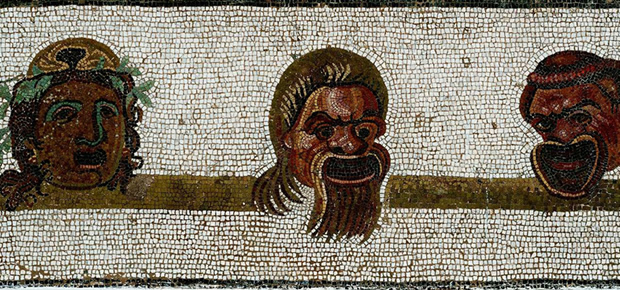
2.2 The literature in Rome
In Rome Literature handy as we know it did not find space immediately. We think that we must wait for the completion of the world-famous Twelve Tables of laws, between 451 and the 450 a.C. - Three hundred years after the founding of the canonical – , to get a first attempt of written documentation.
In fact, the Romans appreciated the singing, music and drama as a form of entertainment, even before the official. Before 240 a.C., year in which you made to coincide with the birth of Latin literature Livius Andronicus, The Romans knew several types of proto-literary. From the side of the legal and political, for example, addition to the aforementioned Twelve Tables, we find annals e i splendor. The first were the editors of facts compiled annually, the latter a sort of calendar in which the days were divided for splendor (favorable) and adverse (unlucky), so that citizens, who gave so much weight to Fortune, could choose the days when doing certain activities. It was the duty of the priests and popes draw up these directories and calendars.
From a poetic standpoint, The Romans already knew some forms of poetry, as praises, by declamarsi on the occasion of the funeral of people of rank, so that their example was fixed forever in the spirit of young talent; we find carmina convivalia, with which he extolled during banquets values of the ancient peasant (which was based on the archaic Rome) and celebrated events and characters.
The dramaturgy of archaic Rome presents perhaps the most peculiar characters. Among the forms of drama we find the archaic fescennini, by fascinum, 'Spell', combats and were composed of repartee, often licentious character, recited during weddings. Do you think that, because it was easy to fall into the vulgar and nell'offensivo, was placed a law regulating the degree of licentiousness of fescennini.
We find, then, the splinting until fabula, from the city of Atella in Campania, a kind of commedia dell'arte Notch, with the characters and traditional fixed as Pappus, il babbeo, Maccus, l’idiota, Dossenus, the hunchback clever. The Atellan has not only influenced the Roman comic theater (Plauto on all), but, even, find some of these characters in the Commedia dell'Arte pre-Goldonian! That of Harlequin and his companions, so to speak.
Among other forms of theater we find the archaic ludi Scaenici and the despite, both forms of art that had a bit 'of everything, dance and music with the flute, singing to acting. And this brings us to the most Roman of all kinds: the satire! We will talk more of this kind, in more depth, but for now suffice it to say that there was a form of entertainment rather ... filled of elements. In satire mingled archaic dance, music, song, mimicry, acting and acrobatics. It is no coincidence that you face up the term to three different sources: Ah lanx, a plate heaped high with delicacies; Lex saturates, a bill that included several items, also unrelated; satire (etruscan which means pray, declamare) and satyroi (the forest spirits of the Greeks) are also considered. As can be seen, the term itself is a source of satire ... content!




